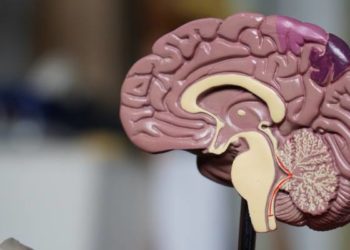Multiple treatment trajectories exist in adolescent depression
1. In this longitudinal retrospective cohort study, there were multiple treatment trajectories identified among youth with depression.
2. Psychotherapy monotherapy was associated with the lowest incidence of hospitalization for depression and attempted suicide rates whereas patients on dual antidepressant and psychotherapy had the highest incidence of hospitalization and attempted suicide.
Evidence Rating Level: 2 (Good)
Study Rundown: Depression is common in childhood and adolescence and trajectories during and after pharmacologic and non-pharmacologic therapies vary across individuals. Many existing studies on the treatment in depressed youth are cross-sectional in nature and do not characterize individual trajectories which is likely heterogeneous. This longitudinal cohort study aimed to characterize heterogeneity in 12-month trajectories of psychotherapy and antidepressant treatment in youths with depression.
Eight classes of patients each with similar treatment trajectories in the year following diagnosis were identified. Youth receiving psychotherapy monotherapy had the lowest incidence of inpatient hospitalization for depression or attempted suicide; youth receiving dual antidepressant and psychotherapy had the highest incidence of attempted suicide during the assessment and post-assessment period. Strengths of this study included assessment of trajectories after depression treatment in a large research claims database. Limitations of this study included the use of only privately insured patients with treatment-seeking behaviour and thus may not be generalizable to higher-risk populations.
Click to read the study, published in JAMA Pediatrics
Relevant Reading: Suicidality and aggression during antidepressant treatment: systematic review and meta-analyses based on clinical study reports
In-Depth [retrospective cohort]: This retrospective longitudinal cohort study used data from the MarketScan Commercial Claims research database from 2007 to 2014 to identify youth younger than 18 years old without baseline bipolar disorder who were insured for 12 months prior to and at least 12 months after a qualifying diagnosis of depression. Follow-up was complete until the end of insurance coverage or December 31, 2014. The index diagnosis was defined as a single inpatient admission or 2 outpatient claims where the patient received a diagnosis of depression using International Classification of Disease, 9th Revision coding. Observation time was divided into three periods: 12 months prior to index diagnosis (baseline period) for gathering baseline characteristics, 12 months following index diagnosis of depression (assessment period) to determine treatment trajectories, and the period from the end of the assessment period through end of follow-up (post-assessment period). Main outcomes were psychotherapy and antidepressant use classified by latent class analysis and incident rates of inpatient hospitalization and attempted suicide. Latent class and univariate analyses were used for statistical analysis.
Overall, 8 district trajectories were identified of 84,909 youth: no treatment (1 class, n = 10 599; 13%), antidepressant monotherapy (2 classes, n = 15 287; 18%), psychotherapy monotherapy (2 classes, n = 40 313; 48%), dual therapy (3 classes, n = 18 710; 22%). The overall incidence of attempted suicide and inpatient hospitalization declined from assessment period to the post-assessment period. Psychotherapy monotherapy had the lowest incidence of attempted suicide (0.8 per 100 person-years) and inpatient hospitalization (3.5 per 100 person-years) during the assessment period and post assessment period (0.5 per 100 person-years and 1.3 per 100 person-years, respectively). The group receiving dual therapy had the highest incidence of attempted suicide during the assessment period (4.7-7.1 per 100 person-years depending on class) and post-assessment period (1.5-1.7 per 100 person-years).
Image: CC/Flickr
©2017 2 Minute Medicine, Inc. All rights reserved. No works may be reproduced without expressed written consent from 2 Minute Medicine, Inc. Inquire about licensing here. No article should be construed as medical advice and is not intended as such by the authors or by 2 Minute Medicine, Inc.






